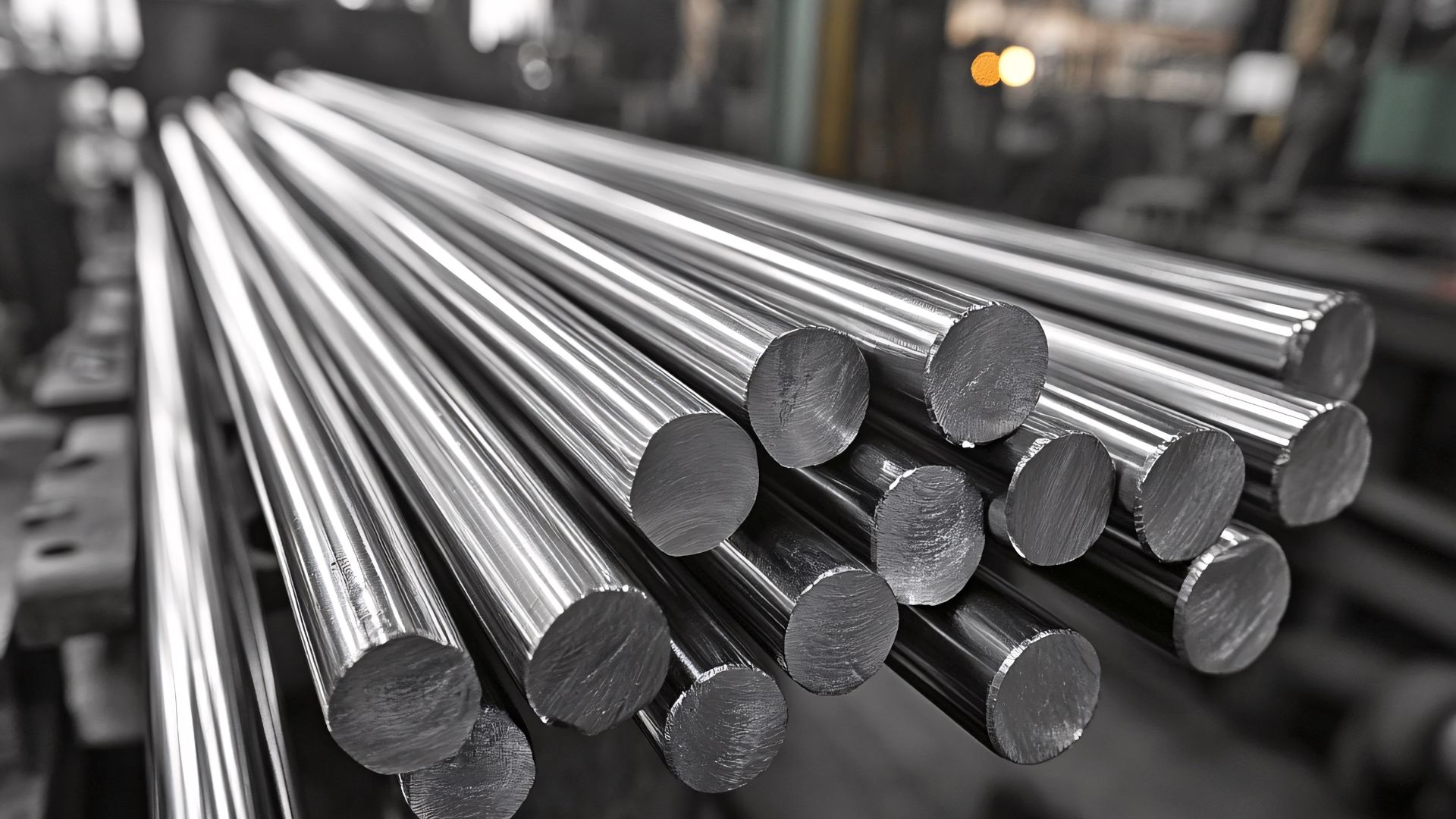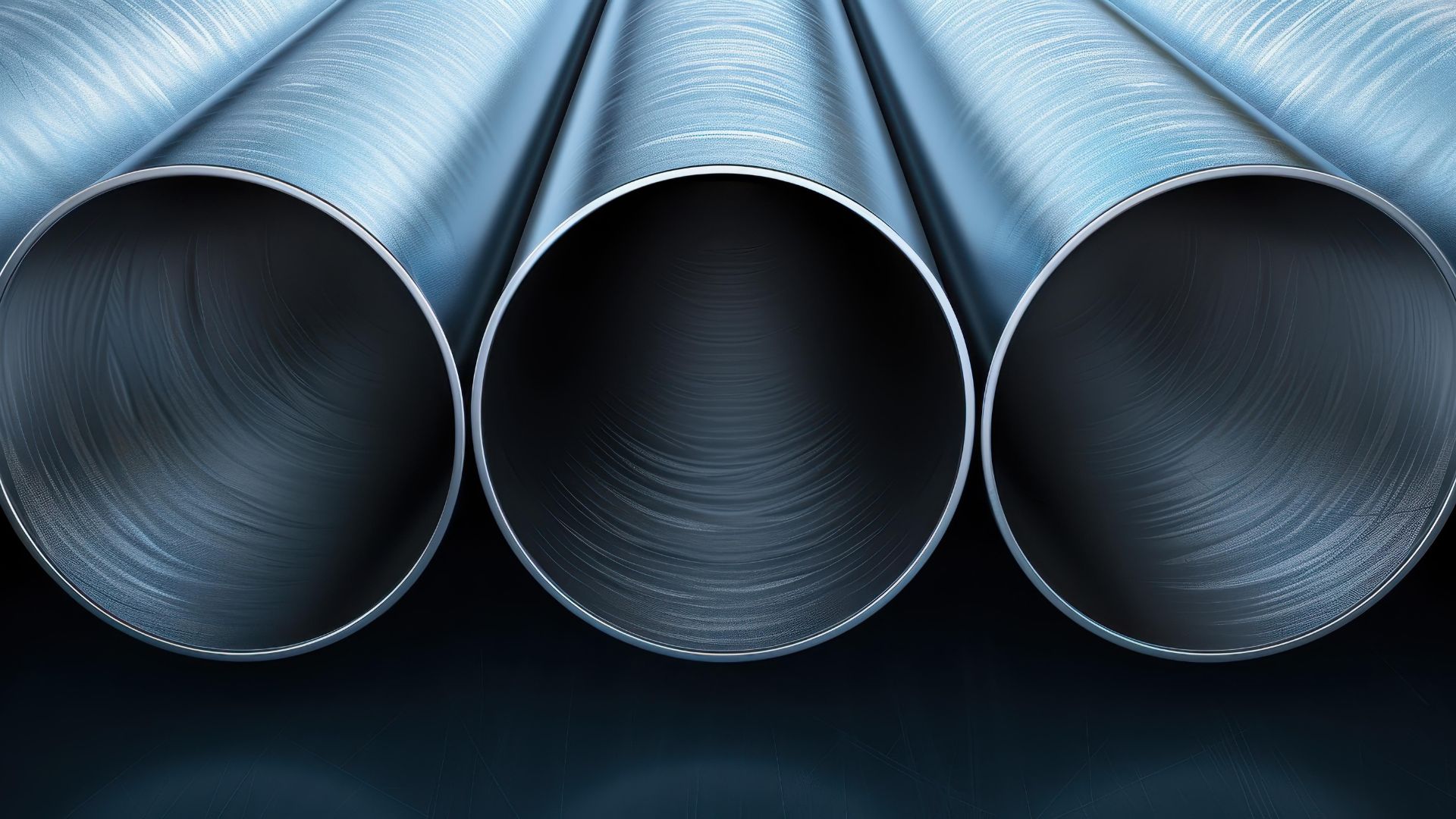In the world of construction and manufacturing, selecting the right stainless steel grades can make the difference between a project’s success and costly failures. You’ve likely experienced the frustration of material failure due to choosing the wrong grade of stainless steel—perhaps corrosion in marine environments, structural weakness under heavy loads, or discoloration in architectural applications. These setbacks not only delay projects but also significantly impact your bottom line.
Why The Grade of Stainless Steel You Choose Matters
Stainless steel grades are standardized classifications that define the chemical composition, performance characteristics, and physical properties of different types of stainless steel. When you’re working on commercial building projects, bridge construction, manufacturing, or roadway infrastructure, knowing which grade to select is crucial for ensuring durability, safety, and cost-effectiveness.
The Society of Automotive Engineers (SAE) and the American Iron and Steel Institute (AISI) have established numbering systems to categorize these grades, making it easier for you to identify and specify the right materials for your needs.
The Five Main Grades of Stainless Steel
Grades of stainless steel are classified according to their microstructure, which determines their specific properties. Understanding these fundamental categories helps you narrow down your options before diving into specific grades.
Stainless steel is grouped into five main categories, determined by its crystalline structure and resulting characteristics:
- Austenitic stainless steel: The most widely used variety, valued for its superior corrosion resistance and ease of forming.
- Ferritic stainless steel: Magnetic stainless steel with good corrosion resistance and stress resistance.
- Martensitic stainless steel: Recognized for its exceptional strength and hardness, frequently utilized in cutlery.
- Duplex stainless steel: Combines properties of austenitic and ferritic types for superior strength and corrosion resistance.
- Precipitation hardening stainless steel: Developed for applications requiring high strength and moderate corrosion resistance.
Popular Stainless Steel Grades and Their Practical Applications
Now let’s examine the most commonly used stainless steel grades you’ll encounter in construction and manufacturing applications. Each has distinct properties that make it suitable for specific uses in your projects.
300 Series: The Austenitic Workhorses
The 300 series represents the most widely used family of stainless steels, known for their excellent formability and corrosion resistance. These non-magnetic stainless steels contain significant amounts of nickel and chromium.
Grade 304: The All-Purpose Champion
Grade 304 (also known as 18/8) is the most widely used of all stainless steel grades, accounting for more than 50% of stainless steel production. You’ll find it in countless applications due to its excellent balance of properties.
- Corrosion resistance: Excellent resistance to most chemicals, foods, and organic materials.
- Weldability: Exceptional welding characteristics without the need for post-weld annealing.
- Formability: Easily formed, drawn, and bent without cracking.
Applications include:
- Commercial kitchens: Food preparation surfaces, sinks, and appliances.
- Construction elements: Railings, structural supports, and decorative features.
- Manufacturing equipment: Tanks, pipes, and processing equipment.
Grade 316: The Marine-Grade Solution
When you’re working in harsh environments, particularly those with chloride exposure, Grade 316 offers superior performance to 304. The addition of molybdenum gives this grade enhanced resistance to aggressive chemical environments and salt exposure.
- Corrosion protection: Contains molybdenum for enhanced resistance to pitting and crevice corrosion.
- Chemical resistance: Stands up to industrial chemicals and salt environments.
- Temperature performance: Maintains strength at elevated temperatures.
Applications include:
- Coastal structures: Building components, railings, and architectural features near saltwater.
- Chemical processing: Tanks, pipes, and valves handling corrosive materials.
- Medical equipment: Surgical instruments and implantable devices.
According to research from the Nickel Institute, correctly specified 316 stainless steel can last more than 100 years in coastal environments, making it an excellent investment for Florida-based construction projects.
Related: Why Corrosion-Resistant Stainless Steel is the Preferred Choice for Tough Environments
400 Series: Ferritic and Martensitic Options
The 400 series stainless steels differ from the 300 series in that they contain little or no nickel, making them more economical but generally less corrosion resistant.
Grade 430: The Affordable Alternative
When your project requires corrosion resistance but doesn’t face extreme conditions, Grade 430 provides a cost-effective solution. This ferritic stainless steel offers good corrosion resistance with the added benefit of magnetic properties.
- Decorative quality: Excellent surface finish with good reflectivity.
- Heat resistance: Good performance at elevated temperatures.
- Magnetic properties: Unlike the 300 series, 430 is magnetic.
Applications include:
- Automotive components: Trim, molding, and decorative parts.
- Appliances: Interior components for dishwashers, refrigerators, and washing machines.
- Architectural details: Indoor decorative elements and trim.
Grade 410: The Hardened Workhorse
When strength and hardness are primary concerns, Grade 410 delivers exceptional performance. This variety can be heat-treated to attain different hardness levels, offering versatility for uses that demand wear-resistance.
- Heat treatable: Capable of being hardened using heat treatment methods.
- Wear resistance: Outstanding ability to withstand abrasion and surface wear.
- Moderate corrosion resistance: Better than carbon steel but less than 304 or 316.
Applications include:
- Heavy equipment components: Parts requiring strength and moderate corrosion resistance.
- Fasteners: Bolts, screws, and nuts for various applications.
- Valve components: Parts for high-pressure valve systems.
Duplex Stainless Steel Grades: The Best of Both Worlds
Duplex stainless steels represent a more recent innovation in metallurgy, combining the beneficial properties of both austenitic and ferritic grades. These grades have gained popularity in demanding structural applications.
Grade 2205: The High-Performance Option
For your most demanding structural applications, 2205 duplex stainless steel blends the superior qualities of both austenitic and ferritic grades. Its unique microstructure provides an exceptional balance of strength and corrosion resistance, particularly valuable in challenging environments.
- Superior strength: Approximately twice the yield strength of 304 or 316.
- Excellent corrosion resistance: Particularly against stress corrosion cracking.
- Cost efficiency: Higher strength allows for thinner sections, potentially reducing material costs.
Applications include:
- Bridge construction: Structural components and reinforcement.
- Chemical processing: Pressure vessels and storage tanks.
- Desalination plants: Components exposed to seawater and brine.
Duplex stainless steel grades can provide significant life-cycle cost advantages over carbon steel in infrastructure applications because of their minimal maintenance requirements and prolonged service life.
From Our Blog: Heavy Structural Beams: Types, Sizes, and Construction Uses
How to Choose the Perfect Stainless Steel Grade for Your Project
Making an informed selection requires careful analysis of your project requirements and operating conditions. Consider the following:
- Environmental conditions: Consider exposure to chemicals, saltwater, and weather.
- Mechanical requirements: Evaluate needed strength, hardness, and fatigue resistance.
- Fabrication methods: Some grades are more weldable or formable than others.
- Temperature range: Different grades perform better at high or low temperatures.
- Aesthetic requirements: Surface finish and appearance vary between grades.
- Budget constraints: Balance initial cost against life-cycle performance.
Stainless Steel Grades Comparison: Making Informed Decisions
Comparing the performance characteristics of different stainless steel grades side by side can help clarify which option best meets your needs. The following comparison highlights key differences to guide your selection process.
When evaluating different stainless steel grades for your project, consider these key properties:
- Corrosion resistance:
- Superior performance: 316, 2205
- Excellent performance: 304, 316L
- Good performance: 430, 410
- Strength characteristics:
- Highest strength: 2205, Precipitation hardening grades
- High strength: 410 (heat-treated)
- Moderate strength: 304, 316
- Cost considerations:
- Premium pricing: 316, 2205
- Mid-range pricing: 304
- More economical: 430, 410
Common Challenges with Stainless Steel Grades and How to Avoid Them
Even with careful selection, issues can arise when working with stainless steel in different environments. Understanding these potential problems helps you take preventive measures during the design and installation phases.
- Galvanic corrosion: When dissimilar metals contact in the presence of an electrolyte, accelerated corrosion can occur. Avoid by using insulating materials between different metals.
- Stress corrosion cracking: Susceptible grades like 304 can crack under tensile stress in corrosive environments. For high-stress applications in corrosive settings, choose 316L or duplex grades.
- Surface contamination: Iron particles from tools or handling can cause surface rusting. Ensure proper handling and cleaning procedures during fabrication and installation.
Why Choose Spirit Metals for Your Stainless Steel Needs
Selecting the right supplier is just as important as choosing the correct stainless steel grade. Spirit Metals offers unique advantages that help ensure your project’s success from material selection through final installation.
When you partner with Spirit Metals for your stainless steel requirements, you gain several distinct advantages:
- Local expertise: With our base in Florida, we understand the unique challenges posed by the eastern coast environment and can help you select the most appropriate materials for your specific location.
- Comprehensive inventory: We maintain extensive stocks of various stainless steel grades, ensuring quick delivery times for your time-sensitive projects throughout Central Florida, Jacksonville, the eastern coast, Brooksville, and down to Ft. Myers.
- Technical knowledge: Our team possesses in-depth knowledge of stainless steel properties and applications, providing you with informed recommendations tailored to your project requirements.
- Quality assurance: Every product we supply meets or exceeds steel industry standards, giving you confidence in the materials you’re incorporating into your projects.
- Custom solutions: We can provide specialty alloys and custom fabrication to meet your unique project specifications.
Making the Right Choice: Stainless Steel Grades for Specific Florida Applications
Florida’s unique climate presents special challenges for metal construction and manufacturing. The presence of high humidity, salt, and strong UV radiation demands meticulous material selection to guarantee long-term durability and optimal performance.
- Coastal construction: For structures within 5 miles of the coast, 316 or duplex grades provide the best protection against salt spray and high humidity.
- Outdoor architectural elements: 316 offers the best combination of corrosion resistance and aesthetic appeal for outdoor railings, facades, and decorative elements.
- Infrastructure projects: Bridge components and roadway hardware benefit from duplex grades like 2205, particularly in areas with salt exposure from marine environments or de-icing chemicals.
- Manufacturing equipment: For food processing and chemical manufacturing facilities, 316L provides excellent resistance to various chemicals while maintaining cleanliness standards.
Conclusion: Leveraging Stainless Steel Grades for Project Success
Understanding stainless steel grades and their specific applications allows you to make informed decisions for your project that enhance the overall longevity, performance, and cost-effectiveness. By selecting the right grade for each application, you’ll avoid costly failures and replacements while delivering superior results to your clients.
At Spirit Metals, we’re committed to supporting your success by providing high-quality stainless steel products along with the knowledge and service you need to utilize them effectively. Contact us today to discuss how our extensive selection of materials can benefit your next project.
Whether you’re working on commercial construction, bridge infrastructure, manufacturing facilities, or roadway projects throughout Central Florida, our team is ready to help you select the perfect stainless steel solution for your needs.


